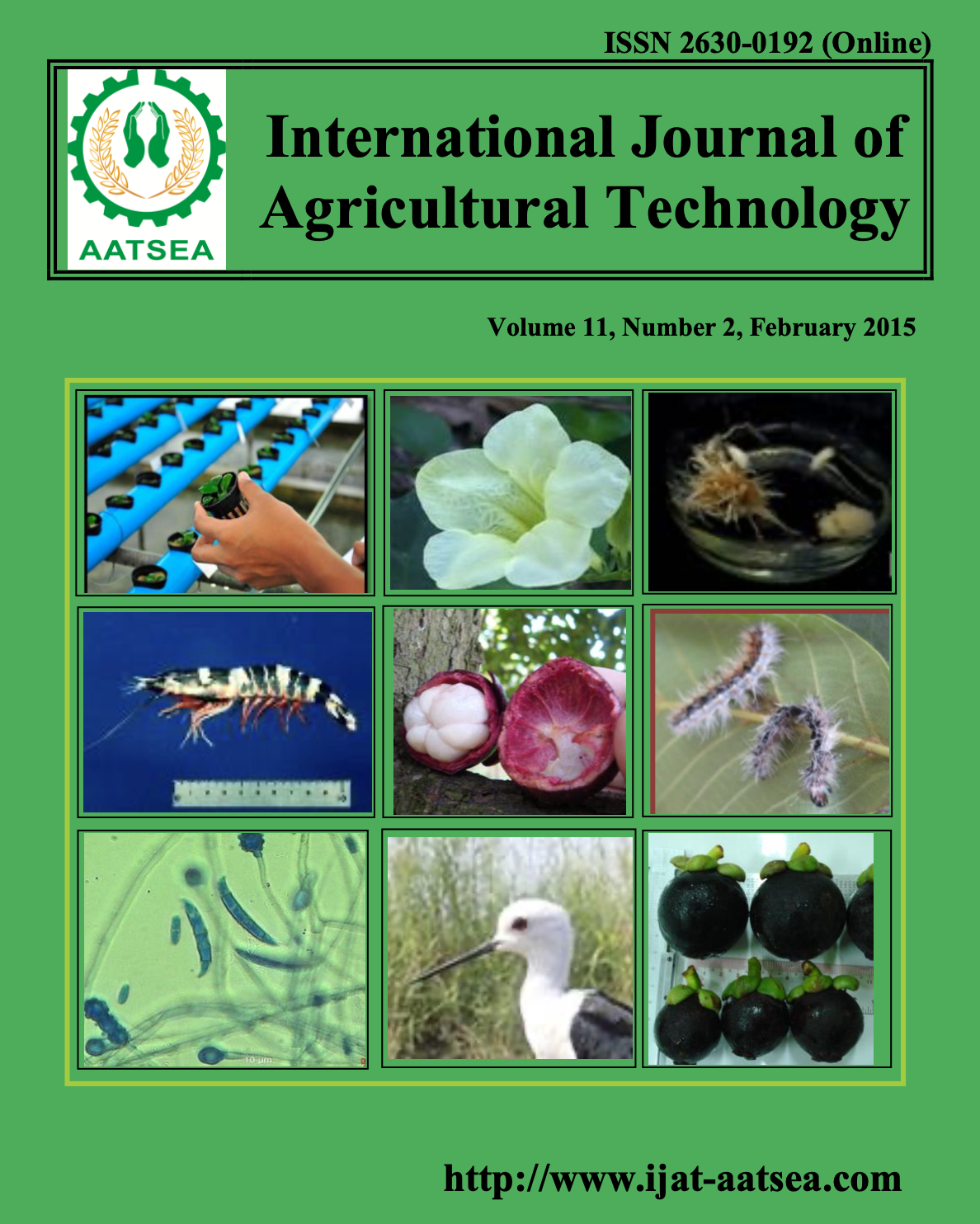Effects of number of seedlings on growth, yield, cost and benefit of 2 rice genotypes in translated fields
Main Article Content
Abstract
Article Details

This work is licensed under a Creative Commons Attribution-NonCommercial-NoDerivatives 4.0 International License.
References
Bangchaud, T. (2001). An economic analysis of hydroponics vegetable farm. (Master’s Thesis). Kasetsart University.
Bank of Thailand (BOT) (2011a). Labour force survey (New Series). Retreived from http://www2.bot.or.th/statistics/ReportPage.aspx?reportID=93&language=eng.
Bureau of Rice Research and Development. (n.d.). Rice knowledge bank: rice variety. Retrieved from http://www.brrd.in.th/rkb/varieties/index.php.htm.
Dingkuhn, M., Schnier, H. F., De Datta, S. K., Dorffling, K., Javellana, C. and Pamplona, R. (1990). Nitrogen fertilization of direct-seeded flooded vs. transplanted rice: II. Interactions among canopy properties. Crop Science 30:1284-1292.
Faruk, M. O., Rahman, M. A. and Hasan, M. A. (2009). Effect of seedling age and number of seedling per hill on the yield and yield contributing characters of BRRI dhan 33. International Journal of Sustainable Crop Prodcution 4:58-61.
Hasanuzzaman, M., Rahman, M. L., Roy, T. S., Ahmed, J. U. and Zobaer, A. S. M. (2009). Pant characters, yield components and yield of late transplanted aman Rice as affected by plant spacing and number of seedling per hill. Advances in Biological Research 3:201-207.
IRRI; International Rice Research Institute (1987). Growth Stage of the Rice Plant. Second Edition. Los Baños Laguna, Philippines.
Kanachareonpong, A. (1994). Response of rice to biofertilizer. Journal of Agriculture 10:244-251.
Kupkanchanakul, T. (2000). Bridging the rice yield gap in Thailand. Retrieved from ftp://ftp.fao.org/docrep/fao/003/x6905e/x6905e01.pdf .
National Bureau of Agricultural Commodity and Food Standards (ACFS) (2010). Database of Food Consumption of Thai People. Ministry of Agriculture and Cooperative. Retrieved from http://consumption.acfs.go.th/index.php?content=consumption&topic=m3&-subtopic=eateronly
Natirong, N., Wansay, C. and Wongubon, W. (1994). Effect of number and age of seedlings on yield and growth of Japanese rice. Journal of Agricuture 12:24-36.
Oryza (2014). Thailand paddy rice output to reach five-year low. Retrieved from http://www.oryza.com/news/rice-news/thailand-paddy-rice-output-reach-five-year-low
Tongaram, D. (2004). Marketing: analysis of decision making for soilless culture. Handout for training entitled “Hydroponics: soilless culture technique”. Paper presented at the conference room 4, building 1, Thailand Institute of Scientific and Technological Research, 21-23 July 2004.
USDA Foreign Agricultural Service (2014). Gain report. Retrieved from http://gain.fas.usda.gov/Recent%20GAIN%20Publications/Grain%20and%20Feed%20Update_Bangkok_Thailand_6-27-2014.pdf.
Wiangsamut, B. and Mendoza, T. C. (2008). Leaf elongation rate, agronomic traits and grain yield of three transplanted rice genotypes. Journal of Agricultural Technology 4:205-217.
Wiangsamut, B., Mendoza, C. T. and Larfarge, A. T. (2006). Growth dynamics and yield of rice genotypes grown in transplanted and direct-seeded fields. Journal of Agricultural Technology 2:299-316.
World Bank Institute (2008). System of Rice Intensification (SRI) – A “How To” guide for farmers: Based on an application in the Philippines.
X-rates (2014). Retrived from http://www.rates.com/calculator/?from=USD&to=THB &amount=1.00).
Zhang, S. G. and Huang, Y. K. (1990). Effect of seedling hill-1 on individual rice plant yield and components. Internation Rice Research Newsletter 15:21-22.


